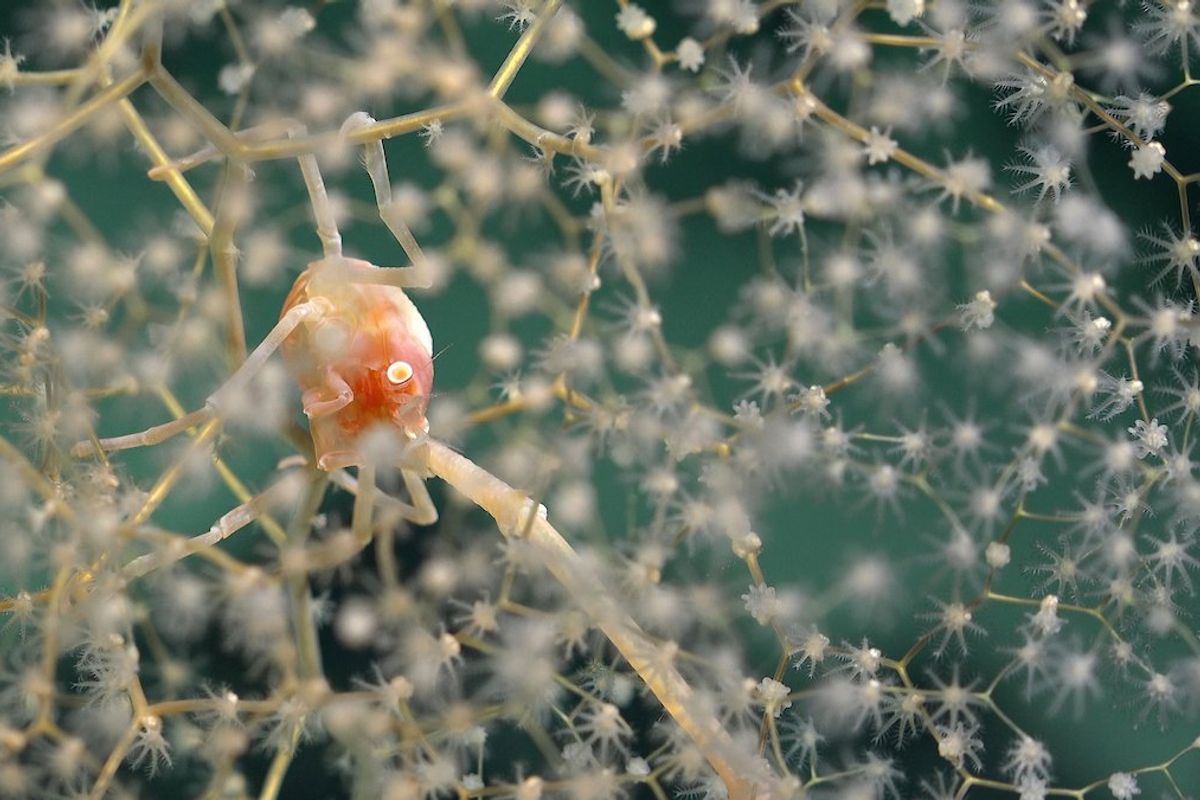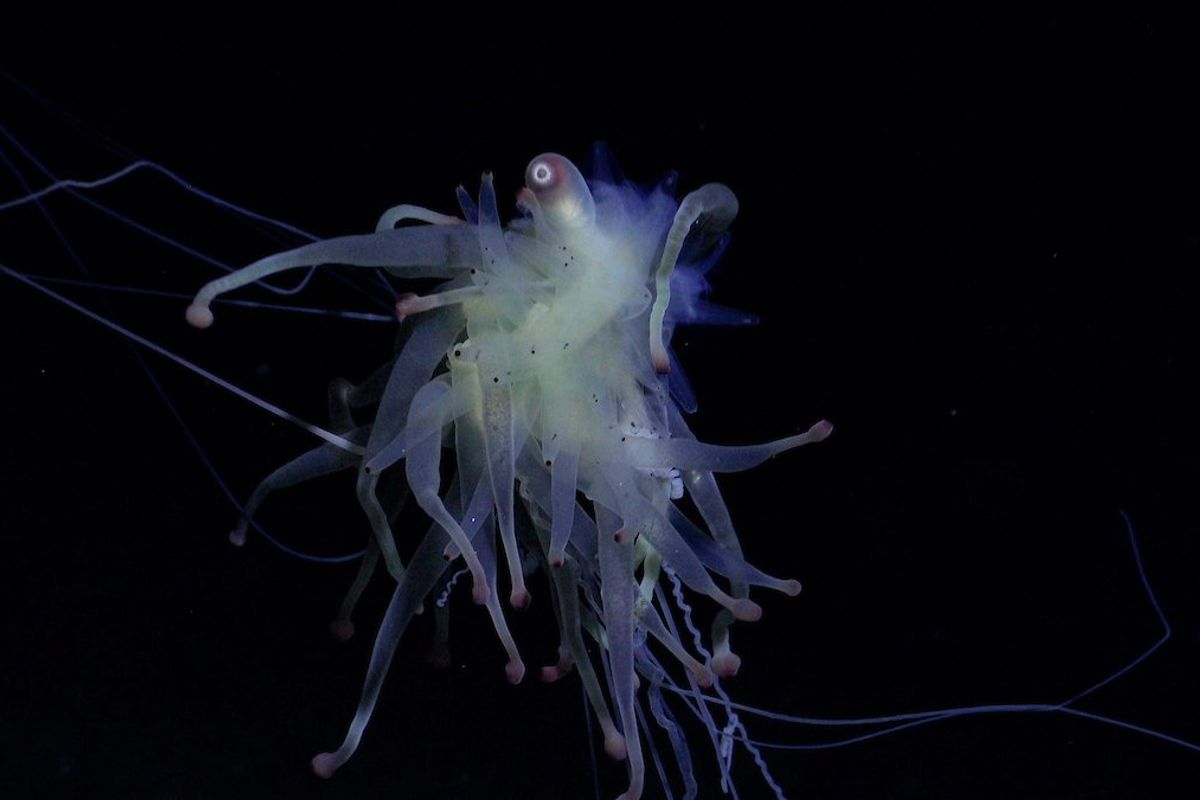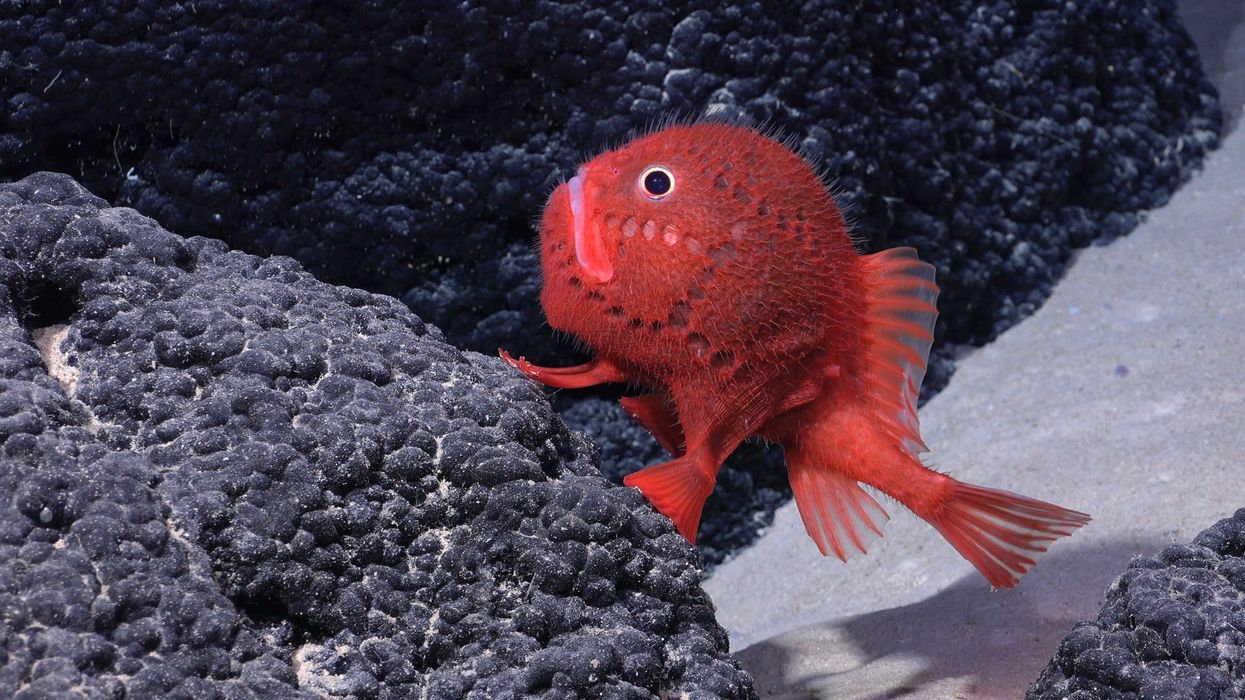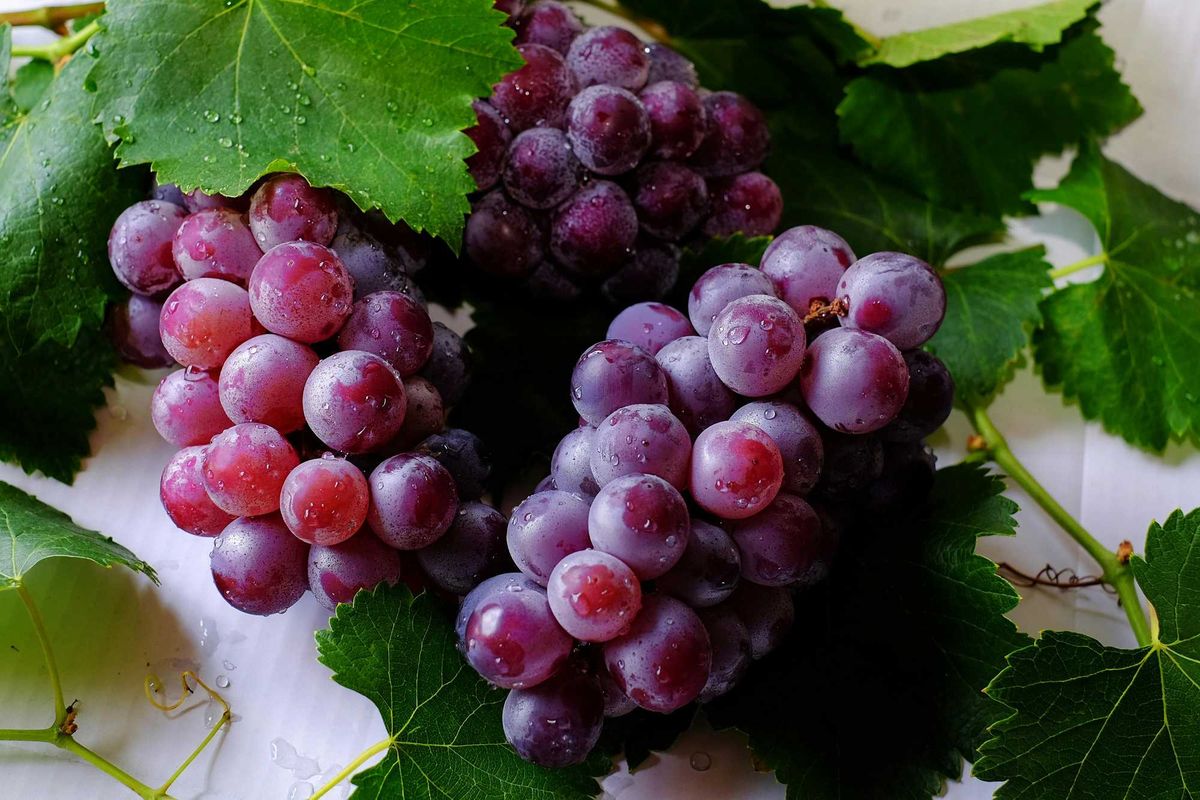Science & Tech
Harriet Brewis
Jul 11, 2025
Over 100 New Species Found In Deep-Sea Exploration Off Chile Coast
Cover Media - Shareable / VideoElephant
It’s hard to fathom that 80 per cent of the Earth’s oceans has never been mapped, explored, or even seen by humans.
And yet, scientists are constantly discovering new life forms beneath the waves.
It has now emerged that underwater mountains off the coast of Easter Island (Rapa Nui) are home to an “astonishing” array of species, dozens of which are totally new to science.
Researchers with the Schmidt Ocean Institute travelled to the seamounts of the Salas y Gómez Ridge, off the coast of Chile, where they found 160 species that had never been seen in the region before, including at least 50 that weren’t even known to exist.
While combing the Ridge, a remote and underexplored area that stretches from offshore Chile to Rapa Nui, they uncovered deep-sea corals, glass sponges, sea urchins, squid, fish, molluscs, crabs, sea stars, squat lobsters, and other never-before observed species.
“We have found between 50 and 60 potentially new species at first sight, a number that is likely to increase as we have many samples to work on in the laboratory,” Ariadna Mechó, of the Barcelona Supercomputing Center, who was part of the expedition, announced at a UNESCO ocean conference last week.

The research took place between 24 February and 4 April of this year, and was conducted by an international team of 25 scientists from 14 organisations across five countries (Chile, United States, Italy, Spain, Netherlands), including the first Rapa Nui marine biologist, Emilia Ra'a Palma Tuki, a recent graduate of Chile’s Universidad Católica del Norte.
Together, they spent the 40 days of the project studying the submarine mountains and oceanic islands of the Salas y Gómez Ridge, which is a 2,900-kilometre-long underwater mountain chain comprising more than 200 seamounts.
The mission followed a scientific research cruise which took place between January and February, which focused on the Nazca and Juan Fernandez Ridge seamounts (also off the coast of Chile) and found 100 suspected new species.
“The astonishing habitats and animal communities that we have unveiled during these two expeditions constitute a dramatic example of how little we know about this remote area,” Dr Javier Sellanes of Chile’s Universidad Católica del Norte, who co-led both research trips, stressed in a statement.
“These expeditions will help alert decision-makers about the ecological importance of the areas and contribute to strengthening protection strategies within and beyond jurisdictional waters.”

Sellane and his colleagues spent the more recent trip closely examining 10 seamounts and two islands on the vast mountain range.
They determined that the individual seamounts harbour distinct ecosystems, such as glass sponge gardens and deep coral reefs.
Now, they hope the data they collected will inform the management of existing marine protected areas and potentially expand them, especially around the island of Rapa Nui.
“The observation of distinct ecosystems on individual seamounts highlights the importance of protecting the entire ridge, not just a few seamounts,” the expedition’s chief scientist Dr Erin E Easton of the University of Texas Rio Grande Valley, said in the same statement.
“We hope the data collected from this expedition will help establish new marine protected areas, including on the high seas on the Salas y Gómez Ridge.”
This article was originally published on 15 April 2024
Why not read:
Unidentified 'monster' washes up on beach in Malaysia
Planet Earth could once have been like Saturn for this reason
Sign up for our free Indy100 weekly newsletter
Have your say in our news democracy. Click the upvote icon at the top of the page to help raise this article through the indy100 rankings
Top 100
The Conversation (0)














